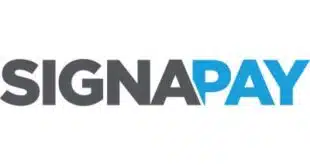It was probably only a matter of time before someone in Congress decided to intervene in the ongoing saga of chip card development in the United States. The huge Target breach, news of which broke inconveniently during the holiday-shopping frenzy, shone a public spotlight on what had been an obscure payments technology that is quite common overseas but quite rare here. Suddenly, the Europay-MasterCard-Visa (EMV) chip standard is not only front-and-center with payments officials, but with regulators and legislators as well.
Sniffing an opportunity, politicians began pointing to EMV as a way to prevent or at least mitigate payment card fraud and began asking questions about why the industry was taking so long to adopt it. Last month, for example, Senators Richard Durbin and Al Franken sent a letter to the Federal Reserve citing the vulnerability of current mag-stripe technology and demanding answers about payment card security. Durbin, of course, requires no introduction to payments executives who are still contending with his famous 2010 amendment capping debit card interchange and setting new rules for debit routing.
The Durbin-Franken letter, addressed to new Fed chairman Janet Yellen, poses seven questions, most of them concerned with what the Fed is doing, under its final rule implementing the Durbin Amendment, to document fraud-prevention policies and procedures at regulated issuers and to make sure issuers are following those policies. The senators want to know, for example, if the extra penny in debit interchange the Fed allows for so-called fraud-prevention measures is actually preventing any fraud.
A reasonable enough question, given the logic of the Fed’s final rule (which, of course, is itself being litigated in appellate court following a federal judge’s decision last summer to throw it out). But what caught our eye was the senators’ final question. We quote:
“… There are indications that Visa and MasterCard may encourage use of EMV cards without the added security of PIN authentication. It is also important to ensure that migration to chip-based technology benefits from coordination with and participation by additional card networks to ensure competition and continued fraud prevention innovation. Does the Board believe that fraud prevention will be enhanced if the Board and other agencies play a role in overseeing the implementation of EMV or similar technology?”
It’s hard to miss the implication here: Not only might regulators cap interchange and make routing rules, they might now start dictating to the industry how and when EMV will be deployed. In other words, the dire consequences of the Target breach could extend far beyond the immediate financial costs.
By the way, the Fed has until March 12 to answer. Much is riding on its response.
John Stewart, Editor
john@digitaltransactions.net




